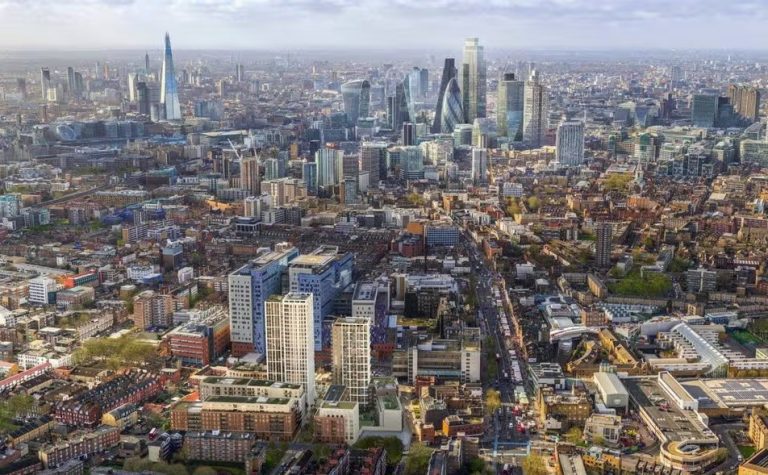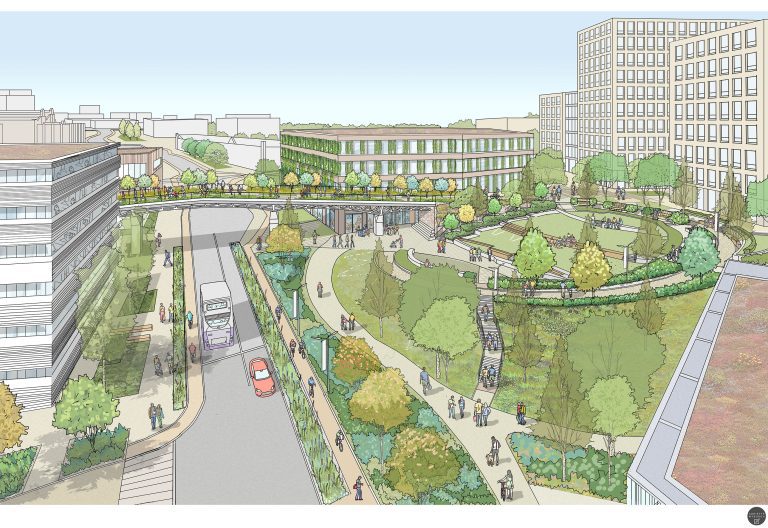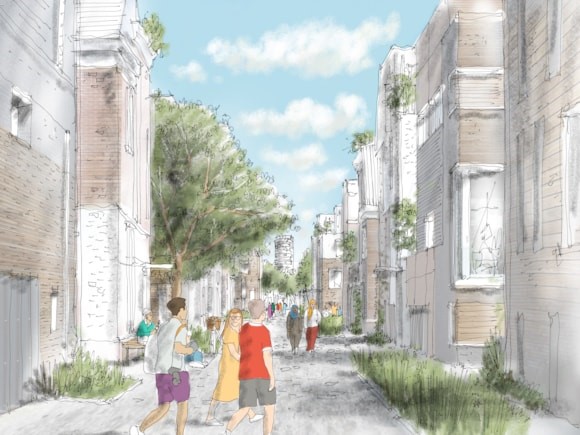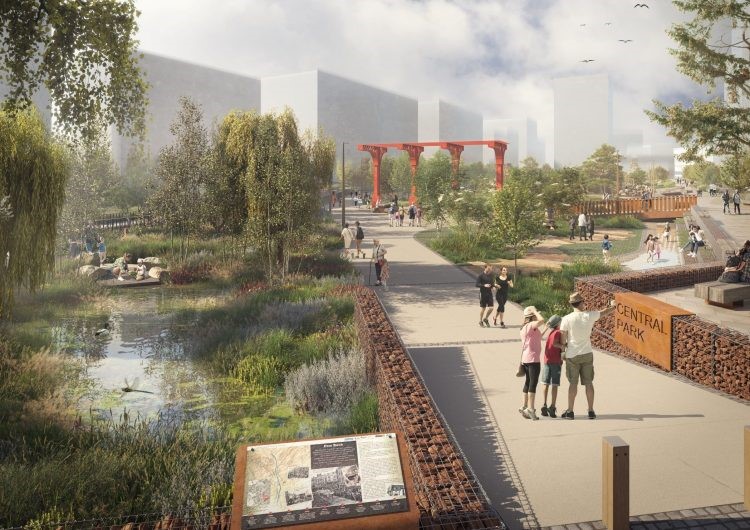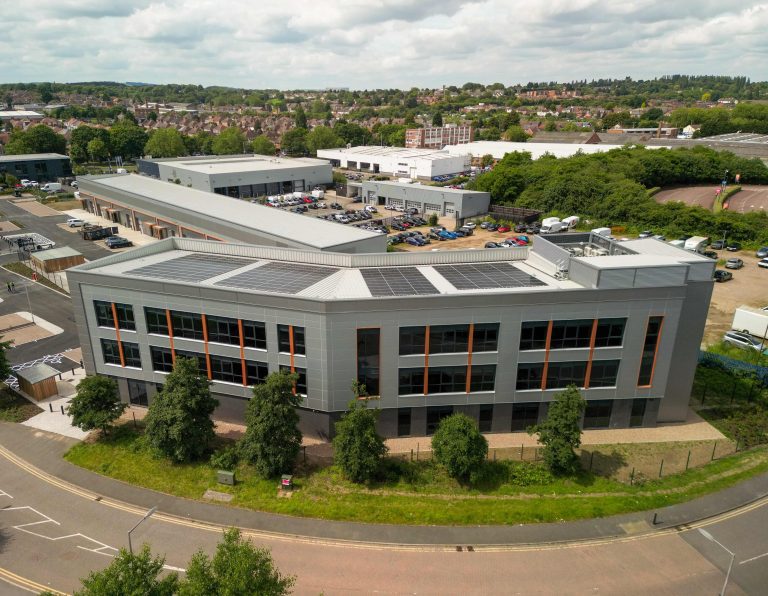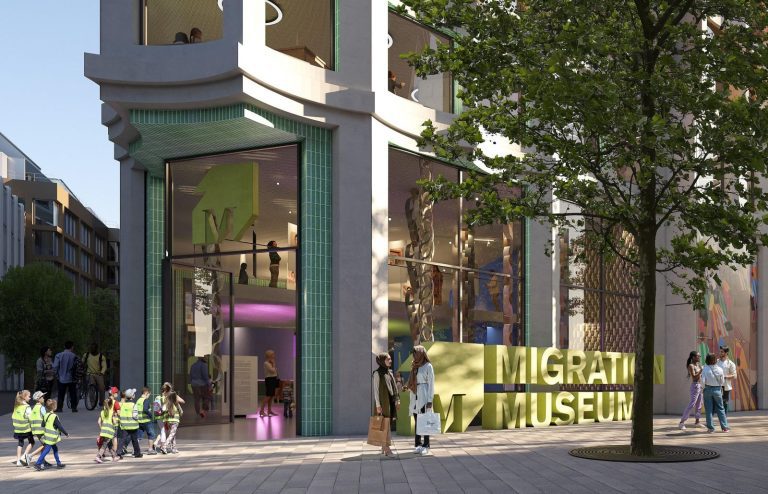Scheme set to enhance Salford’s global reputation for industry and innovation Plans to bring forward Crescent Innovation, a pivotal element of the wider £2.5bn, 252-acre Crescent Salford masterplan, have been approved by Salford City Council. The proposals are being brought forward by the Crescent partnership, comprised of Salford City Council, the University of Salford, and ECF – a joint venture between Homes England, Legal & General, and Muse. The scheme comprises 933 new homes, 1.7m sq ft of new commercial innovation, academic, and research floorspace, active ground-floor space, and a new movement hub, along with significant improvements to public spaces. Creating a high-quality innovation ecosystem around the University of Salford, Crescent Innovation will build on existing world-class research and development capabilities; help drive further economic growth in the city and wider region; and facilitate enhanced links between academia, research, and business. Spanning 29 acres between Broughton Road East and University Road, Crescent Innovation will be linked to the wider masterplan by Salford Rise – a near five-acre podium which will span Frederick Road. Laying the foundations for connectivity and collaboration, Salford Rise will act as a key gateway between the University of Salford’s campus and the wider innovation zone. Salford City Mayor, Paul Dennett, said: “With our Crescent partners – ECF and University of Salford – we are pushing ahead with our vision to create world-class research and development facilities that local people and businesses can benefit from. The Crescent Innovation proposals are a key element of the wider vision for the Crescent area and will change the face of the area through the creation of a high-quality innovation environment, where people can achieve their full potential. I am delighted to see that this important planning application has been approved and look forward to seeing our vision delivered on the ground.” Vice-Chancellor of the University of Salford, Professor Nic Beech, commented: “This is a major milestone in our shared mission to transform Salford into a global hub for innovation and groundbreaking research. Working alongside our Crescent partners, we are committed to advancing our vision of creating world-class facilities that will benefit local residents and businesses. I am thrilled that this significant planning application has been approved and eagerly anticipate seeing our shared vision come to life.” Max Bentham, Development Director at ECF, said: “The approval of the plans for Crescent Innovation marks a significant step forward in our collective mission to make Salford a global hub for innovation and groundbreaking research. The city has always been a pioneer of industry, and the creation of Crescent Innovation will equip Salford – and the wider region – with the facilities and opportunities to make an impact on the world stage, as well as driving growth and prosperity.” Crescent Innovation forms one aspect of the Crescent masterplan being delivered by ECF in partnership with Salford City Council and the University of Salford. It will bring together industry, education, and the local community by delivering more than 3,000 homes, 1m sq ft of offices, retail, leisure, a new multi-model transport hub, and vast areas of green space. The site is located within Salford’s Innovation Triangle, which is made up of Salford Quays and MediaCityUK, the University of Salford, and Salford Royal Hospital. The go-ahead for Crescent Innovation follows the completion of three world-leading university facilities – the North of England Robotics Innovation Centre, the Science, Engineering, and Environment (SEE) building, and Energy House 2.0. CBRE advised ECF on planning for Crescent Innovation, while Make Architects is leading on design. Building, Design & Construction Magazine | The Choice of Industry Professionals
